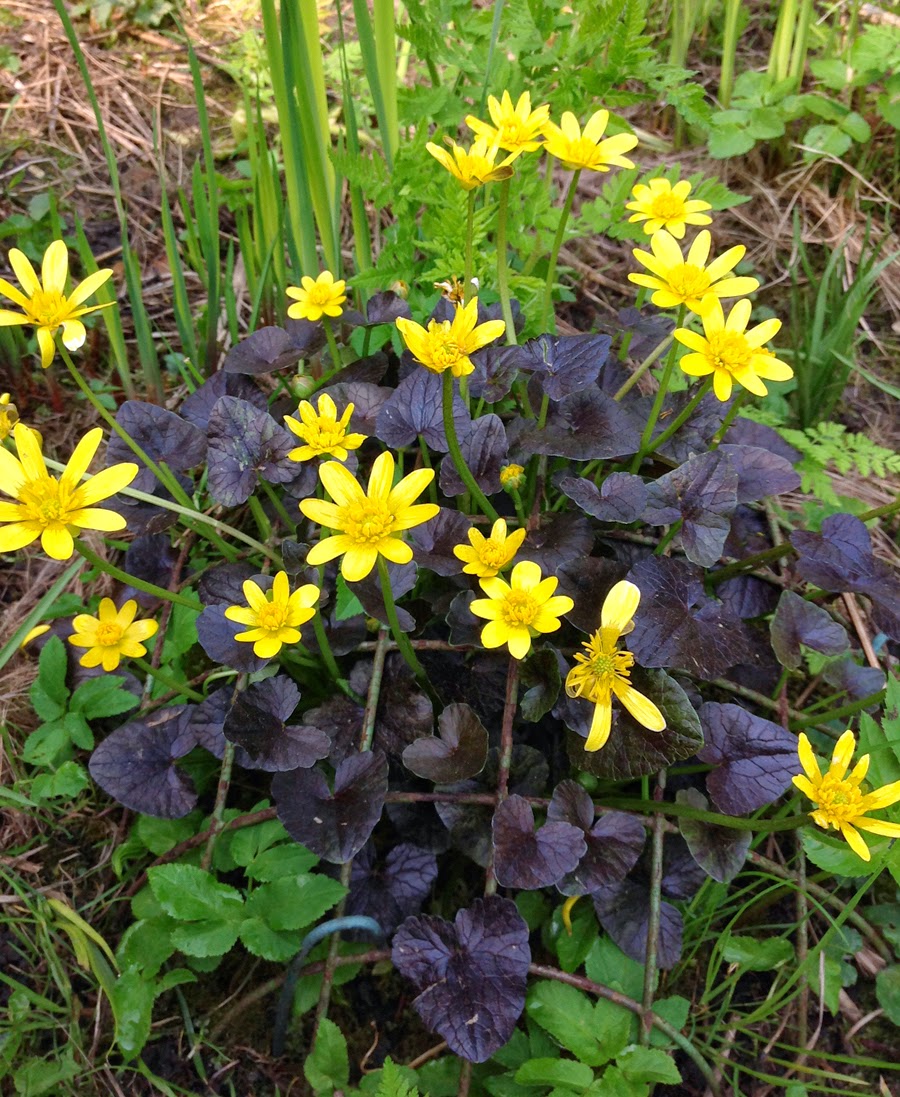So here are a batch of four Spring flowers that have sprung up in the garden and soon will be gone until next year . . .
#018 Hyacinthus orientalis
Garden Hyacinth
I think I prefer Hyacinths naturalised in the garden than forced into flower early in pots (although they are lovely too, to scent the house on dull winter days, or even as cut flowers). I usually plant the spent bulbs of potted Hyacinths in the garden under shrubs. These are under the Cornelian Cherry, which is apt as they originate from the same part of the world – SW Asia, Syria, Turkey. By growing them outside they provide welcome food for early Bumblebees.
I've just been reading about the seeds which have a little fleshy attachment called an 'elaiosome' (greek for 'oil' + 'body') which is full of irresistable nutritious food that ants can't resist. The ants take the seeds into their burrows, feast on the delicious snack and then, being very tidy creatures, they take the seed to the compost-heap zone of their burrow where it has the perfect environment to germinate and grow into a new bulb. A very good reason not to cut the seed heads off when the flowers fade.
#019 Ranunculus ficaria
Lesser Celandine 'Brazen Hussy'
Lesser Celandines are native British wildflowers, they can be invasive, and when we moved here 15 years ago there were areas of the garden infested with it. Then it disappeared! Hens eat Lesser Celandine! The plant was used in medicines and was known as 'Pilewort' because the knobbly little fig-shaped ('ficaria' = fig shaped) root tubers look like haemorrhoids. (Do hens get piles?)
But I missed the shiny yellow flowers that seem to radiate the sunshine, so when I saw this bronze leafed cultivar called 'Brazen Hussy' I couldn't resist and gave her a home near our 'Dragonfly Pond', to protect the roots from inquisitive beaks I covered her with an upturned wire hanging basket.
Celandine is a variation of 'chelidonia' which means Swallow, from the old tradition that the flower appears with the Swallows and disappears when they fly away. I haven't yet seen a Swallow, but they should be here soon.
#020 Fritillaria meleagris
Snakeshead Fritillary
A rare native wildflower that I am happy to grow in the damp grassy edge of the Dragonfly Pond. And it also is protected by an upturned wire basket, mainly so that its grass-like leaves aren't trampled before the flower stalks grow taller. As you can see, the buds have suffered from unauthorised pecking incidents!
The name 'Fritillaria' is Latin for 'dice box' and 'meleagris' means 'spotted like a guinea fowl' – both allude to the chequered/spotty pattern on the petals, like a gaming board or a guinea Fowl's feathers.
#020 Tussilago farfara
Coltsfoot
Like the Lesser Celandine, this is a native wildflower that can be very invasive. I've allowed it to stay in an area under our Walnut tree, I love the tufty yellow flowers that appear on stalks that look like asparagus; the flowers are an important nectar source for emerging queen Bumblebees. The large grey-green leaves that have the texture of felt, appear later. The flowers can self-pollinate and seed heads like super-fluffy dandelion clocks with follow the flowers. Coltsfoot also spreads by its roots which apparently look a bit like colt's hooves (I haven't checked), as the hens don't seem to eat it I think it's here to stay.
A folk-name for Coltsfoot was Coughwort as it was used in medicines (and is still used in herbal throat lozenges and syrups) to treat viral infections, colds, and coughs. Tussis means 'cough' and ago means 'to act on' (I could do with some of that this week!).
With Spring well and truly sprung, I need to catch up fast - more multiple flower posts with follow soon.
Celia
xx










Celia, I hope that your cold virus leaves quickly! Meanwhile, I thank you so much for this marvelous flower quartet catch-up.
ReplyDeleteIt's interesting to learn how these flowers arrived in your garden, and to hear about how you've learned which ones need some protection from your garden assistants.
Each flower is a beauty. The fritillary is my favorite. These tiny wonders just seem to be magical to my eye and they always make me think of Mackintosh's drawing and painting. I didn't know about the dice box Latin translation though. Thank you for that info!
xo
I agree about the hyacinths, in the garden they are looser and more natural looking.
ReplyDeleteSomething has been having a good chomp on my Fritillaria meleagris too - did you spot the culprit?
I always plant my potted hyacinths out too and have quite a nice patch of them now the heads are a lot smaller though but look more natural. I have one fritillary so far and love their unusualness - and a patch of self-seeded celandine adding a bright spot of colour.
ReplyDeleteA lovely array of spring flowers! And interesting that so many of the native plants were/are used as medecines.
ReplyDeleteWhat a great whizz around the Spring garden. I like the less fussy shape of that hyacinth and it's a gorgeous colour too. I've never seen coltsfoot and wouldn't recognise unless it was pointed out to me, but now I know what to look for!
ReplyDeleteI do like the information you give us with your flower postings.
ReplyDeleteI have that cold virus too, I can't stop coughing.
I should check your fritillaries carefully Celia, I have discovered that the culprit is the Lily Beetle which sadly have to be squashed as they multiply rapidly.
ReplyDelete